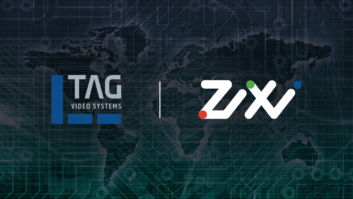Very few people like rules or being told what to do, even if it is in their best interests. This is understandable in some ways but in circumstances where failure to conform could result in a fine or other penalty, it does not make much sense. There is no better example of this in broadcasting than the attitude towards compliance monitoring. It is a mandatory requirement in the majority of countries around the world but, despite this, the attitude that it is unnecessary and just an added cost still seems to prevail.
Such a point of view is difficult to understand, especially if one of the objections to compliance is financial. Broadcasters can be sanctioned or even fined if they contravene editorial guidelines. This means that having off-air recordings of a station’s output is crucial in case of any viewer complaints about the content of a programme. Similarly, a broadcaster has to meet specific standards for technical quality set by the regulator. Commercial playout centres also have to satisfy these rules and can be financially penalised by their broadcast clients if they fail to do so.
That alone should convince anyone of the important role compliance monitoring and logging plays in the broadcast production and distribution process. The misapprehension that these functions are solely the preserve of the engineering and operational departments is at last being undermined by modern technology extending their reach beyond the master control room (MCR) into other parts of the broadcast centre.
In the ‘old days’ of analogue transmission, when there were only a few TV channels, technical checking was carried out in the MCR by operators looking at display screens and ensuring the accompanying audio was all right by listening on loudspeakers and checking peak meters. The logging procedure was a basic ‘recording off transmission’ (ROT), which is why, to some comedians in the business, it was known as a ‘ROTten’ job. For many years transmissions were recorded on to long-play VHS videotape, before moving to disc. In both cases trying to find a specific point to check either a breach of editorial compliance or a fault was difficult, unless the time it occurred was known.
When relevant sections were eventually identified and retrieved, the process for delivering excerpts was unwieldy. The extracts also usually gave little in the way of value other than regulatory compliance. On top of this, image quality was invariably low and the whole process was time-consuming and susceptible to human error. The introduction of digital and computer-based technologies brought vast improvements in efficiency and quality, as well as cost-effectiveness. Even so, there was still an emphasis on content compliance, making systems merely a more sophisticated version of their ROT predecessors.
A broadening of the compliance monitoring remit was made possible by the transition from analogue to digital broadcast infrastructures. The wide-scale adoption of SDI (serial digital interface) in the 1990s as the backbone of TV centres and playout facilities allowed loggers to be connected directly to the internal source distribution chain. This was a major advantage for organisations that did not have to monitor and record from off-air signals. SDI was reliable and of high quality, with the added benefit of being able to carry multiple audio tracks, captions and extended data services (XDS), such as V-Chips for restricting access to certain types of programming (the ‘V’ was said to stand for ‘violence’).
Logging was added to SDI inputs, with decoding and monitoring of additional audio sources and other available information. But the real advance was the development of front-end systems for loggers. Web-based user interfaces were introduced, allowing for smoother implementation plus distributed access over enterprise networks. With the advent of file-based operations, multi-channel streaming with review capability became a reality, as did automated logs and viewer ratings.
New tools were developed to improve the quality control (QC) process and take the pressure off human operators, who could let automation deal with the bulk of the more mundane tasks and only intervene if there were more complicated problems. These included caption keyword monitors, fingerprinting, transcoding and export burn-in capabilities. The ratification of loudness standards, starting with the ITU 1770 and 1771 specifications in 2006 and 2007, added another layer of analysis and control to maintain the viewers’ quality of experience (QoE).
Such features are now brought together in software that facilitate deeper and wider scrutiny of the broadcast chain. Software-based systems are extremely flexible, which means they can be programmed for a wide range of applications and can be scaled up or down as a network expands or contracts. The ability to scale logging and compliance programmes is made possible through the increasing use of IT hardware and the cloud as the foundation of broadcast infrastructures, which can also be easily upgraded when new features are released.
Compliance was never an unnecessary expense but through their newfound flexibility and wider feature sets, logging and monitoring systems more than justify the outlay. There are also savings to be made on staff training and the lower number of operators needed for MCRs and network operations centres (NOCs). The value of compliance systems is also increased because they can be used by the promo, library and scheduling departments, not just engineers and operators. Through interfaces on networked computers, all personnel can now use the logging system to check when commercials aired, which helps with invoicing, and what copyrighted material has been broadcast.
Modern logging and monitoring systems such as Mediaproxy’s LogServer provide all this functionality and more. On a purely technical level, operators are able to keep track of hundreds of channels using exception-based monitoring, rather than just looking at pictures on screens. As broadcasters contemplate the shift from SDI to IP networks, based on the SMPTE ST 2110 and 2022-6 and MPEG-DASH (Dynamic Adaptive Streaming over HTTP) standards, LogServer and the Monwall interactive multiviewer have the capability to handle multiple streams, for both conventional TV and OTT, and are able to monitor both the native output and proxy media.
Compliance should be right at the forefront of any broadcast business decision, whether production, post production or distribution. If it was ever an after-thought, it certainly is not now.







